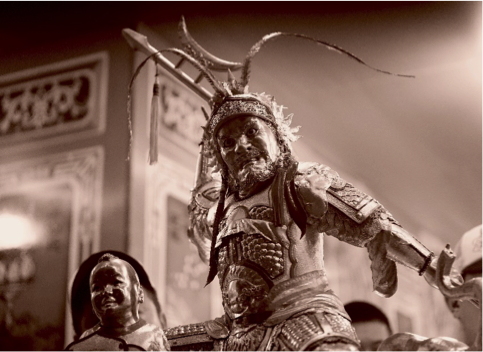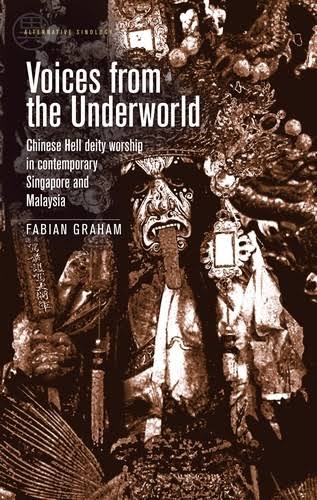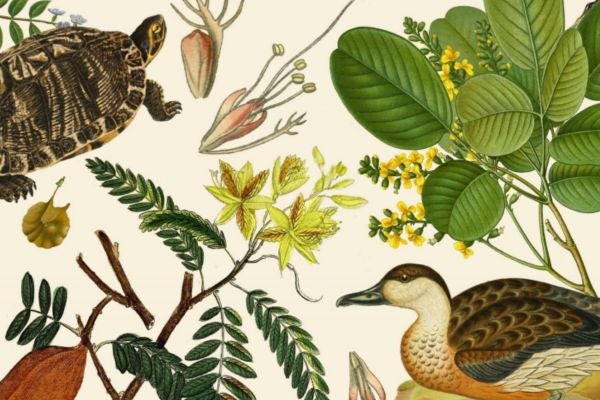Researching Chinese religion in Southeast Asia and Taiwan: Spotlighting spirit mediums

I have been researching Chinese vernacular (folk/popular) religion and temple culture, often with a key focus on spirit mediumship, in Singapore, Malaysia, China and Taiwan since 2006. My field of interest raises an interesting question. As an anthropologist, with the full spectrum of society to draw from, why did I decide to focus on religion, and more specifically, on topics related to spirit, soul and afterlife research? To understand this, is to recognise the broader purpose and relevance of my work.
The earliest archaeological and written records show that the worship of spiritual beings has been a near universal factor in the evolution of human society. Among the plethora of possible explanations for this phenomenon, some have gained traction through association with great thinkers from various disciplines. For instance, Sigmund Freud argued that to children, parents represent absolute authority and the power to pass moral judgement accompanied by punishment or reward. Religion, he claimed, therefore evolved out of the fatuous need of offspring for a judgemental authority figure as a parent substitute after their parents’ death. In contrast, Emile Durkheim, a founding father of the social sciences argued that religious beliefs and practices served to unite individuals into a single moral community, thereby bonding a population and strengthening it through a shared socio-religious cultural identity.
In a Darwinian ‘survival of the fittest’ sense, a society with shared moral and spiritual beliefs would be more likely to integrate disjointed social groups than be integrated into them. From Durkheim’s perspective, this explains why oral traditions dependent on individuals for propagating a cultural identity have historically been incorporated by scriptural traditions, today’s ‘world religions’. However, exceptions tend to disprove rather than prove a rule, and contemporary Chinese vernacular religion is an outstanding exception, as while drawing from two orthodox traditions, Taoism and Buddhism, the lived tradition is based on multiple oral mythologies, and on lay practices disavowed by orthodoxy.
Most notably, spirit mediumship is central to the vernacular tradition, and this involves deities entering their spirit medium’s bodies while they are in trance possession states in temple settings, including those at numerous home altars.

Deities are therefore key. In contemporary Chinese religion in Taiwan and Southeast Asia, the central factor around which all else revolves are identifiable deities, as without deities, the ritual and material culture built up around their worship would crumble.
While philosophically it is possible to analyse Chinese deities in terms of their energy (qi) and spiritual essence (hun), their nature, i.e., how they materialise in the human world, live in the deity realms, and their identity beyond often conflicting mythologies all remain an enigma.
Nonetheless, Chinese religion is essentially pragmatic, and therefore as a collective and diverse pantheon, deities represent the full spectrum of human needs and desires. For this reason, researching Chinese deity worship in multiple locations teaches us as much about the trials and tribulations of religious practitioners brought about by individual social and political systems, as it teaches us about the religion itself. In other words, developments in local and national temple traditions, and the choice of which deities are worshipped are inevitably entangled with the changing socio-political nature of the society of which they are a part. Consequently, the domain of religious phenomena shares a symbiotic relationship with secular society.
Returning to deities. In Chinese temples throughout the region, consulting deities in statue form or through their spirit mediums is as commonplace as liturgical services in religious buildings such as mosques and churches in other locations. In these temples, two-way communication is believed to take place between devotees and deities through divination, most commonly by addressing a deity statue with a question, and then throwing divination blocks. In this way, a deity answers simple ‘yes’ ‘no’ questions by manipulating the way the blocks fall. More complex social interactions occur between individuals and deities when the latter are channelled through their spirit mediums.
The possessed spirit medium in a trance possession state is considered a deity incarnate, and through the spirit medium, devotees feel that they can communicate directly with their gods. In most temples in Singapore, Malaysia and Taiwan, consultations are a weekly event, and long queues of devotees' patiently await their turn. Individuals and families come to consult deities on matters such as health, wealth, love, luck, resolving family disputes, uninvited spirits, and communicating with the deceased.

Here, performance and religiosity combine, with spirit mediums dressing in robes resembling those decorating the deity statues, and assimilating the perceived personality traits and physical attributes of the possessing deity. Depending on the needs of devotees, impromptu rituals are performed to change someone’s luck, bless their business, heal an ailment, mend social fractures within a family, exorcise the involuntarily possessed, and mediate with or make offerings to ancestors on the descendants’ behalf.
As both Freud and Durkheim had suggested, but on a far broader level, this research therefore addresses multiple social issues which are perhaps inherent to different aspects of human nature. First, on an individual level, is the quest for well-being, wealth, good fortune, social harmony and belonging. Then, on a societal level, the resulting analysis of the evolution of new, reinvented and sometimes unique religious practices and traditions serves to illustrate the challenges of dealing with corruption, discrimination, religious community formation and ethnic and national identity. Therefore, religious evolution, which is possible in non-textual religions, demonstrates the continual reinvention of tradition which has evolved to deal with many of life’s most emotionally wrought uncertainties.
A large percentage of the most popular deities channelled by mediums were previously humans who were deified after death. Therefore, on a transcendent level, by working with spirit mediums possessed by deities, my research investigates questions fundamental to the human condition. The existence of an independent and animating spirit, the influence of prayer on the proactive efficacy (imagined or real) of deific beings, and, most poignantly, philosophical deliberations on the nature of the human soul, and the possibility of its continuing survival after one’s own physiological death. These are all philosophical questions my research seeks to explore.
By diverging from traditional approaches to the study of religion, and offering an alternative point of academic departure, my research aims to contribute to wider present-day academic discussions concerning the interrelationships between sociocultural and spiritual worlds; human agency and the evolution of cosmology; and to discourse related to de-stigmatising the very notion of spirits and spirit possession in the contemporary study of esoteric and religious traditions.
The views expressed in this forum are those of the individual authors and do not represent the views of the Asia Research Institute, National University of Singapore, or the institutions to which the authors are attached.










